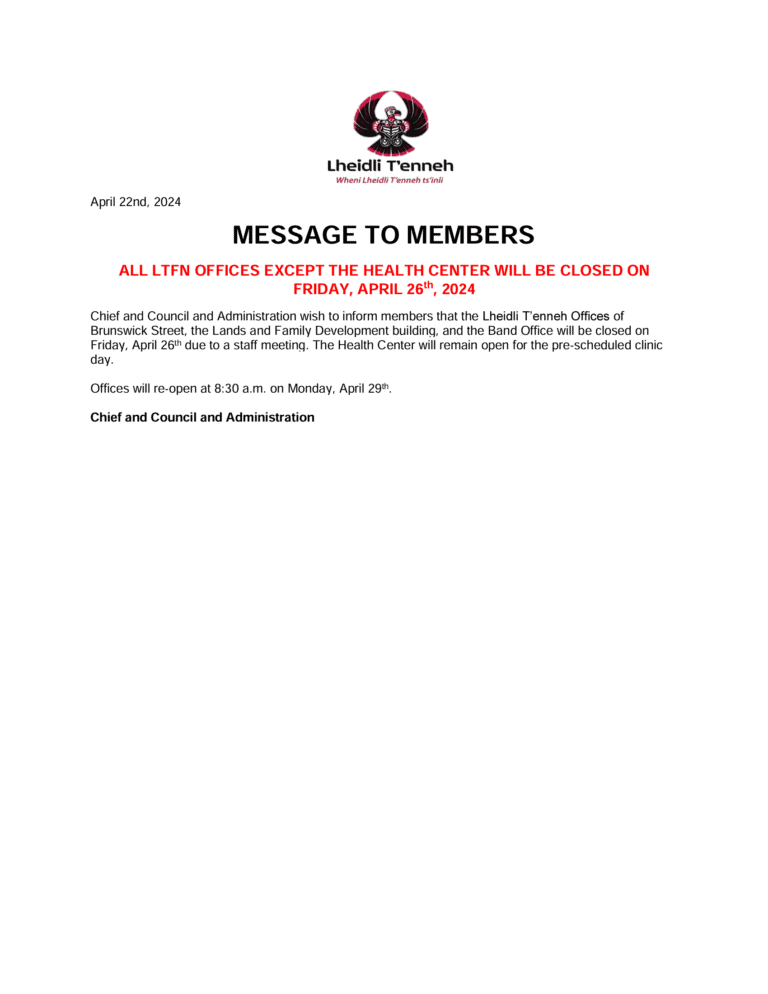
The Lheidli T’enneh are an Indigenous community of people in and around the city of Prince George, British Columbia. The name “Lheidli” means “The People from the Confluence of the River” in the Carrier language, referring to where the Nechako River meets the Fraser River and their traditional territory.
Within this territory, Lheidli T’enneh works hard to develop economic opportunities but also to practice and preserve traditional activities. Through various programs and services, Lheidli continues to maintain and protect its culture and history for its 400 plus members while improving their quality of life.
Today, the Lheidli T’enneh First Nation moves forward as a motivated, educated, and determined Nation, one that connects the lessons of the past with the hopes and dreams of the future.
We welcome you to explore our website and learn more about our community.
Mussi Cho
Do you have a question or would like to provide us with some feedback about how we are doing?